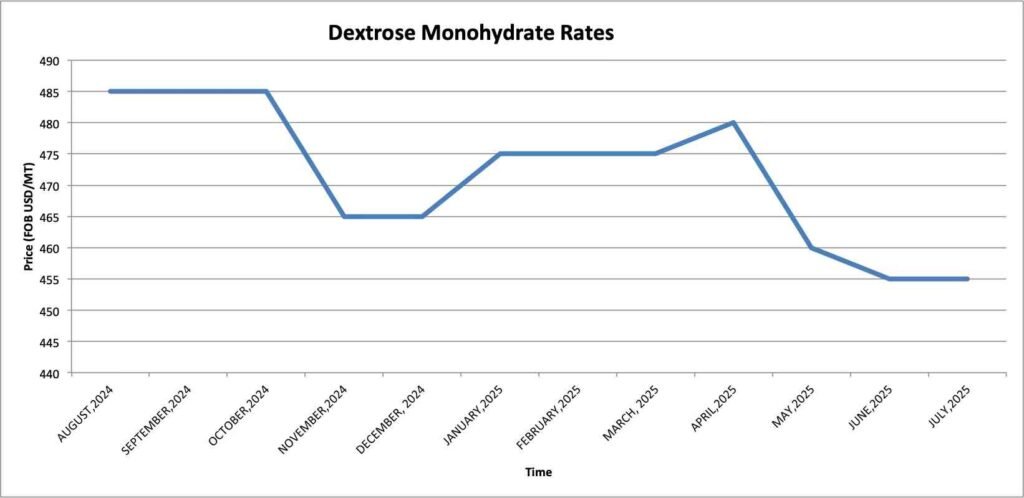Are volatile Dextrose Monohydrate prices hurting your budget? Worried you are paying too much? Let's cover how to buy smarter and save money.
To save money, understand corn price cycles, buy during low-demand seasons like Q1, seek direct factory deals, negotiate bulk discounts, and clarify all freight costs upfront.
At FINETECH, my job is to get competitive pricing for my clients. Smart buyers know that saving a little per kilo adds up. The key is understanding the market to buy at the right price and time. Here are the strategies we use.
How do corn harvests affect Dextrose Monohydrate prices?
See dextrose prices change and don't know why? Does this make your cost forecasting impossible? The reason is often in the cornfield.
Dextrose is made from corn starch, so its price follows corn prices. A good corn harvest means more supply and lower costs. A poor harvest raises prices.

Dextrose is not made from air; its main raw material is corn. This direct link is key to understanding price trends.
The cost chain is simple: Corn Price1 → Corn Starch Price → Dextrose Price2.
The main corn harvest in China and the US is in autumn (Q4). This creates a price cycle:
- Post-Harvest (Q4-Q1): Corn supply is highest, so prices are lowest.
- Pre-Harvest (Q2-Q3): Old corn inventory is low, so prices are highest.
Following this cycle helps you predict when prices will be best. At FINETECH, we watch these trends to advise our clients.
Corn Price Cycle vs. Dextrose Price:
| Time of Year | Corn Supply | Dextrose Price Trend | Buyer Strategy |
|---|---|---|---|
| Q1 (Jan-Mar) | Highest | Often Lowest | Best time to buy. |
| Q3 (Jul-Sep) | Lowest | Often Highest | Avoid large purchases. |
Why is Q1 often the best time to buy Dextrose Monohydrate?
Tired of buying at peak prices? Want to schedule your purchases when costs are lowest? Let's look at why Q1 is your best opportunity.
Q1 (January-March) is often the best time to buy because corn supply is highest from the recent harvest, while market demand is often lower after the holidays.

Timing is everything. Buying in the wrong month can cost you 5-10% more. Planning your purchases around this Q1 window is a smart strategy.
Two key factors make Q1 ideal:
- Maximum Supply3: Factories have high inventory from the recent harvest and want to sell.
- Lower Demand4: Many food companies built up stock for the holidays in Q4, so they buy less in Q1.
High supply plus low demand equals better prices for you. Smart buyers plan their major annual purchases for this period. At FINETECH, we help clients create these annual purchasing plans.
Can direct factory deals lower the cost of Dextrose Monohydrate?
Tired of paying markups to traders? Think you can save by going direct? Let's look at the pros and cons of factory-direct deals.
Yes, buying directly from a factory cuts out middleman costs. However, it also brings risks like communication issues, high MOQs, and complex logistics that you must manage yourself.

Going direct seems cheaper, but you take on all the work and risk.
- Pros: You cut out the trader's profit margin, lowering your cost.
- Cons: You must handle difficult communication, meet high MOQs (often multiple containers), and manage all logistics and customs documents yourself. The risk of quality problems is also higher.
A partner like FINETECH offers a hybrid solution. We give you direct-factory pricing but manage all the risks, communication, and logistics for you.
Sourcing Options:
| Option | Price | Risk/Workload for Buyer | Best For |
|---|---|---|---|
| Direct from Factory | Lowest | Highest | Very experienced buyers with a team in China. |
| Through a Trader | Highest | Lowest | Buyers who prioritize convenience over cost. |
| With FINETECH | Competitive | Low | Buyers who want good prices without the risk. |
How do you negotiate bulk discounts for Dextrose Monohydrate?
Buying large volumes but still paying the standard price? Feel you deserve a better deal? Let's discuss how to negotiate effectively.
Negotiate bulk discounts by committing to larger annual volumes, consolidating orders into longer-term contracts, and using current market data to support your request.

If you are a big buyer, you have power. You just need to use it smartly.
- Commit to Annual Volume5: Don't just talk about one order. Tell them your total need for the year. This makes you a more valuable customer.
- Offer a Long-Term Contract: A 6 or 12-month contract gives the supplier security. In return, you should get a better price.
- Use Market Data6: Know the current corn price. If it has dropped, you have a strong reason to ask for a lower dextrose price.
A good negotiation is a two-way street. You offer predictability, and they offer a better price.
Negotiation Levers:
| If You Offer... | You Can Ask For... |
|---|---|
| A Large Annual Commitment | A Percentage Discount |
| A Long-Term Contract | A Fixed Price or Favorable Price Formula |
| Reliable, On-Time Payments | Better Payment Terms (e.g., lower deposit) |
How can you avoid hidden freight fees for Dextrose Monohydrate?
Ever get a freight bill much higher than expected? Tired of hidden fees? Let's clarify how to get transparent shipping costs.
Avoid hidden fees by understanding Incoterms (FOB vs. CIF), requesting a fully itemized freight quote, and working with a reliable freight forwarder or supplier who guarantees pricing.

Your product price is just part of the cost. Shipping fees can have nasty surprises.
First, understand the terms:
- FOB (Free On Board): You control and pay for the main ocean freight.
- CIF (Cost, Insurance, and Freight): The supplier pays for the main ocean freight. This seems easier, but the supplier might use a cheap forwarder who hits you with high fees at your destination port.
To avoid surprises:
- Get a Detailed Quote: Ask your supplier or forwarder to list all charges, including destination fees like THC (Terminal Handling Charge) and customs clearance.
- Ask Directly: Before you confirm, ask in writing: "Are there any other destination charges I should be aware of?"
At FINETECH, we handle all logistics and provide a clear CIF price. This means the price we quote is the price you pay, with no hidden surprises.
Conclusion
To save money on dextrose, buy strategically. Understand market cycles, negotiate from a position of strength, and demand full transparency on all costs. This turns an expense into an advantage.
-
Understanding Corn Price fluctuations can help you grasp the economic dynamics affecting various industries. ↩
-
Exploring how Dextrose Price is determined will provide insights into the broader agricultural and food supply chain. ↩
-
Understanding Maximum Supply can help you make informed purchasing decisions and save money. ↩
-
Exploring Lower Demand will reveal insights on timing your purchases for better deals. ↩
-
Exploring this link will help you understand how committing to annual volume can enhance your negotiating power and secure better deals. ↩
-
This resource will provide insights on leveraging market data to negotiate better prices, ensuring you make informed purchasing decisions. ↩


